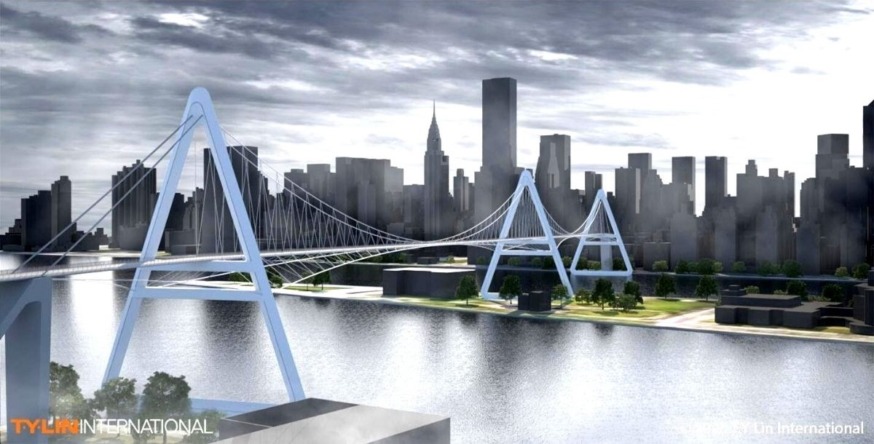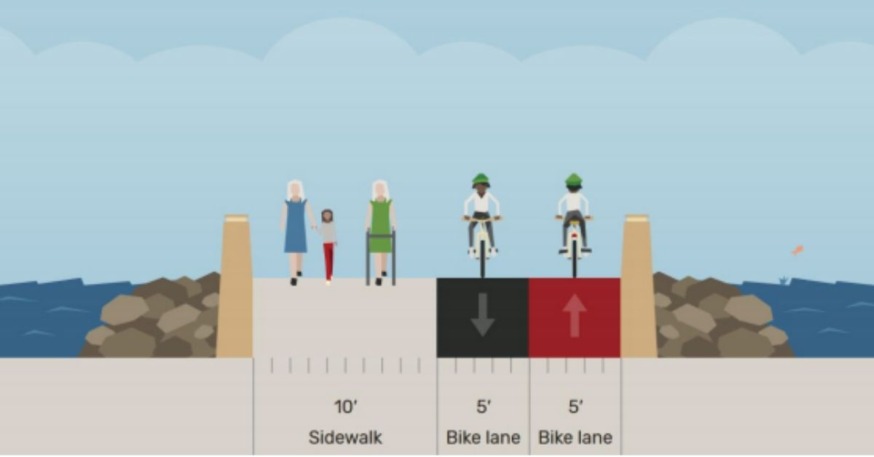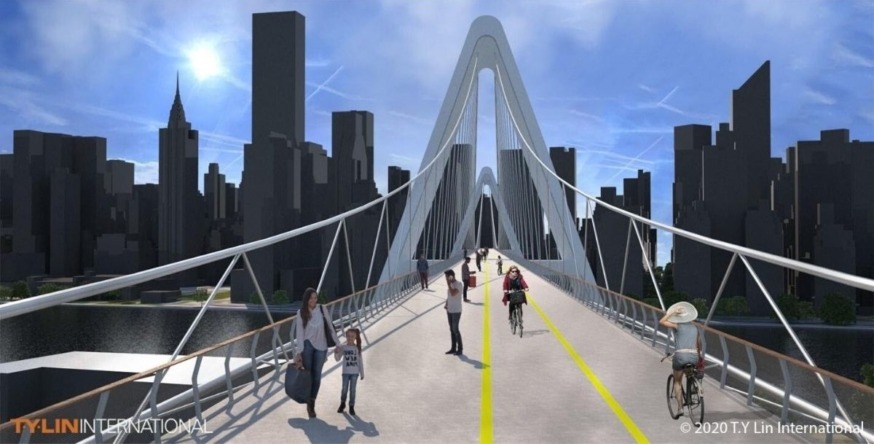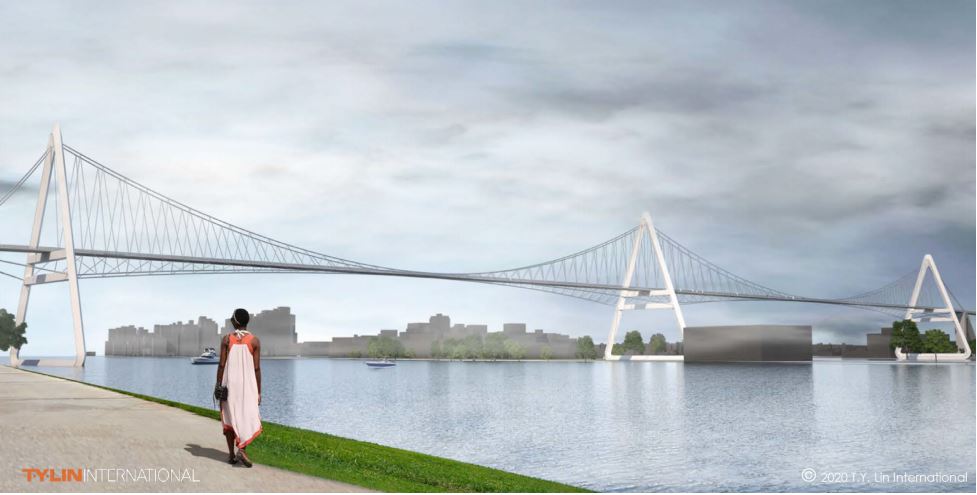
Queens Ribbon Bridge. (Rendering provided by T.Y. Lin International)
June 25, 2020 By Michael Dorgan
A new bridge connecting Queens to Manhattan — that would only carry cyclists and pedestrians — has been proposed by a group of transport experts.
The bridge, which is being called Queens Ribbon due to its slim design, would run from Long Island City through Roosevelt Island and into midtown Manhattan, according to renderings released Wednesday.
The design was created by Sam Schwartz, a former city traffic commissioner, along with engineers from NYU Tandon School of Engineering and T.Y. Lin International. The group said the city needs such a structure due to the increased number of people opting to walk or cycle across East River bridges.
For instance, daily bike traffic increased on the Queensboro Bridge from 4,243 average bridge crossings in 2013 to 5,044 average bridge crosses in 2018, according to DOT data.
The Queens Ribbon, the group said, would meet future demand by carrying up to 20,000 people per day.
The new structure would consist of a 20-foot wide bridge deck pathway that would be suspended by cables. The cables would be supported by three delta-shaped towers located near the Long Island City shore, at Roosevelt Island, and near the Manhattan shore. Each tower would be around 300 feet tall and 200 feet.
The bridge deck pathway would contain two five-foot lanes for cyclists going in each direction. A separate 10-foot wide lane would be constructed for pedestrians to share. The deck would hang around 125 feet above the East River.

Ribbon Bridge Typical Cross-section (Rendering provided by T.Y. Lin International)
The early design plans do not give an exact starting point for the Long Island City entrance/exit.
An area within the future East Midtown Greenway waterfront – a 1.5-acre public space stretching from East 53rd to 61st Streets – is being touted as the Manhattan entrance/exit. Exit 8 on FDR Drive at 41st Street has also been suggested for the Manhattan side entrance/exit, according to a report by Gothamist.
Pedestrians and cyclists looking to access the bridge on Roosevelt Island would be able to do so via an elevator.
The group gave a preliminary cost of around $100 million for the project and said it could be constructed within 10 years.
They also released similar design plans for two other bridges connecting to Manhattan. One bridge would link Lower Manhattan and Brooklyn and the other would run from Manhattan to New Jersey.
The proposals would need city and state approval and come at a time when city finances, in particular, are in a dire condition due to the COVID-19 shutdowns.
Tax revenues are down by around $9 billion, the mayor announced at a press briefing Wednesday.
The mayor when asked about the bridge plan at that briefing said it would be difficult to conceptualize the building of such structures right now given the economic crisis. He said that another option might be to re-purpose existing bridges.

Queens Ribbon Bridge. (Rendering provided by T.Y. Lin International)
The Queensboro Bridge, which was constructed in 1909 is the only direct connection for pedestrians and cyclists between Queens and Midtown Manhattan.
Currently, bicyclists and pedestrians share a narrow space on the north outer roadway. Bicycle and pedestrian advocates have said that the lane has become too busy and is dangerous.
They are pushing for the north outer roadway to be dedicated for bicyclists with the south outer roadway, currently used by cars, for sole pedestrian use.
The Triborough Bridge, which opened in 1936, has one small lane for pedestrians and cyclists are required to walk their bikes on this lane. It lacks a direct connection to Manhattan and therefore only has a fraction of the Queensboro Bridge bike and foot traffic.
Retrofitting old bridges to accommodate more cyclists or pedestrians would be challenging, Department of Transportation Commissioner Polly Trottenberg said at Wednesday’s briefing.
Trottenberg said that the agency, however, was open to exploring the new bridge proposals.
“We have budget challenges right now, but I think it’s exciting what he’s [Sam Schwartz] put forward and will be engaging with my leadership on it,” she said.

View from Manhattan’s eastside (rendering by T.Y. Lin International)
